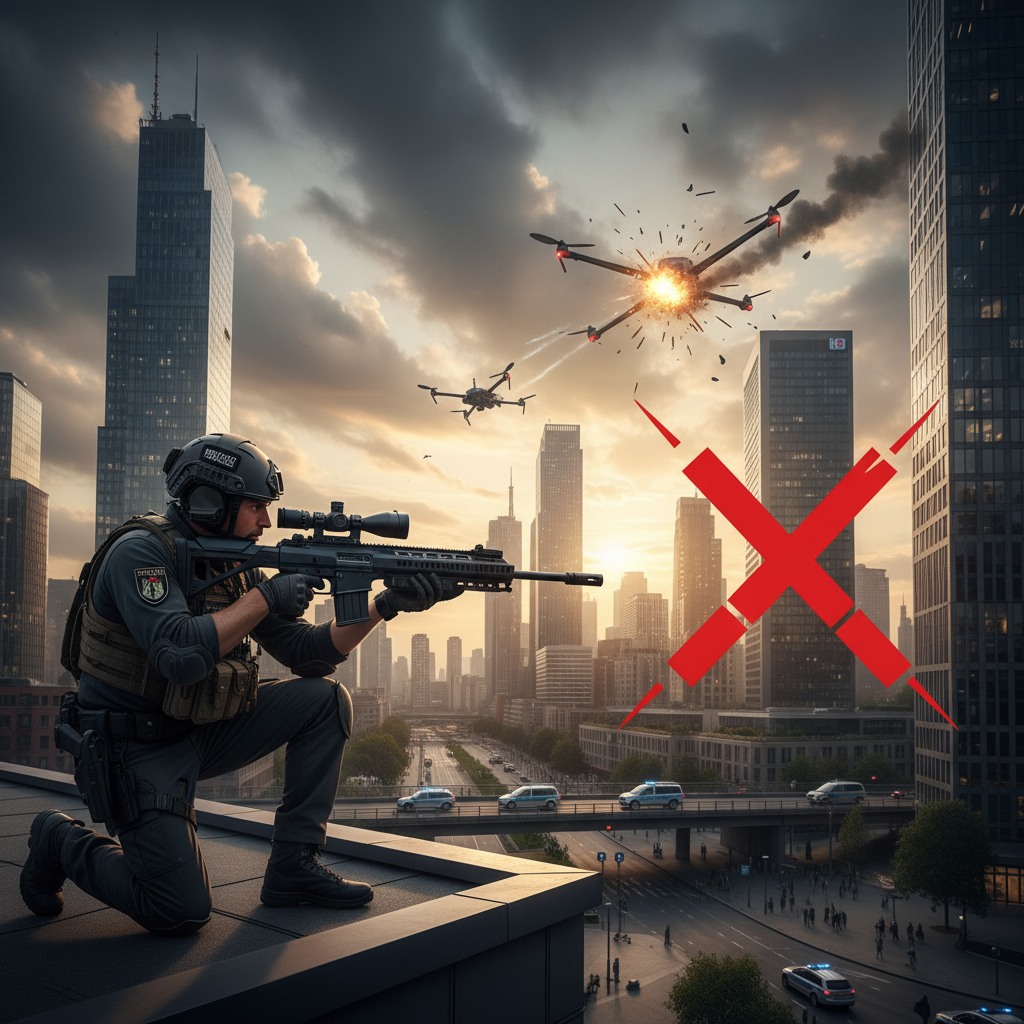The Sky’s the Limit, But Not for Rogue Drones: Germany Authorizes Police to Shoot Down Threats

The blue skies above Germany, once the domain of birds and commercial aircraft, are increasingly becoming a battleground. No longer just a recreational hobby or an innovative tool for photography, drones, particularly smaller, commercially available models, are rapidly morphing into a significant security concern across Germany and other European Union nations. In a significant move, Germany is now poised to authorize its police forces to shoot down these “rogue” drones, marking a pivotal shift in how authorities plan to combat this evolving threat.
This development underscores a growing recognition among European governments that the proliferation of accessible drone technology, while offering numerous benefits, also presents a potent new challenge to public safety, critical infrastructure, and even national security. The decision to empower police with such a drastic measure highlights the urgency and the potential dangers posed by these seemingly innocuous devices when wielded with malicious intent, or even through sheer negligence.
The Rise of the Drone Threat: A European Reckoning

In recent years, incidents involving unauthorized or suspicious drone activity have surged across Europe. From disrupting airport operations to hovering over sensitive government buildings and even facilitating criminal activities, the versatility of drones has made them an attractive tool for various nefarious purposes. It’s no longer a hypothetical threat; it’s a very real and present danger.
Consider the chaos wrought by drone incursions at major airports, such as Gatwick in 2018, which grounded thousands of flights and left countless passengers stranded, costing millions in economic losses. While such widespread disruption makes headlines, the more insidious and frequent instances involve smaller drones used for reconnaissance, smuggling contraband into prisons, or simply invading privacy. These smaller, harder-to-detect drones are precisely what German authorities are now focusing on.
The challenge lies in the sheer accessibility and affordability of these devices. A person with minimal technical expertise can purchase a drone online and, within hours, be operating it. This low barrier to entry, coupled with the difficulty of distinguishing between a hobbyist and a malicious actor, creates a complex enforcement dilemma for law enforcement agencies.
Beyond the Barrel: The Complexities of Taking Down Drones
While the authorization to shoot down drones might seem like a straightforward solution, the reality is far more intricate. The act of firing a projectile into the air, even at a small object, carries inherent risks. Collateral damage, whether to people or property on the ground, is a major concern. A falling drone, especially one carrying a payload, could cause significant injury or damage. The environmental impact of stray bullets or fragments also needs careful consideration.
Furthermore, simply shooting down a drone doesn’t necessarily solve the problem. Identifying the operator and gathering evidence remains crucial for effective law enforcement. Advanced countermeasures, such as signal jamming, GPS spoofing, or even drone-catching nets, offer alternative, less destructive methods of interception that might be preferred in certain scenarios. However, these technologies also come with their own limitations, including effectiveness against sophisticated operators and potential interference with legitimate communication channels.
The German approach, empowering police to use lethal force, suggests that other methods may have proven insufficient or too slow in critical situations. This highlights a balancing act between effective deterrence and minimizing risk to the public. Clear protocols and rigorous training will be paramount to ensure that this new power is exercised responsibly and only when absolutely necessary.
A European Trend: Harmonizing Security in the Skies
Germany’s decision is unlikely to be an isolated incident. As drone security concerns continue to escalate, other EU member states are likely to follow suit, either by adopting similar measures or by strengthening their own counter-drone capabilities. There is a clear need for a harmonized European approach to drone regulation and counter-drone strategies.
Efforts are already underway at the EU level to develop comprehensive frameworks for drone registration, operator licensing, and geo-fencing technologies that could, in theory, prevent drones from entering restricted airspace. However, the pace of technological development often outstrips regulatory frameworks, creating a constant game of catch-up for authorities. The authorization to shoot down drones is a stark illustration of authorities needing to react quickly to an evolving threat landscape.
The rise of drone technology presents both incredible opportunities and formidable challenges. As European nations grapple with how to harness the former while mitigating the latter, Germany’s move to authorize police to shoot down rogue drones marks a significant and potentially controversial step. It signals a new era in airborne security, where the skies above our cities and critical infrastructure are no longer implicitly safe from small, unmanned aerial intruders.
Looking Ahead: Striking a Balance in the Drone Age
The implications of Germany’s decision are far-reaching. It raises important questions about public safety, the proportionality of force, and the future of drone technology itself. While the immediate goal is to enhance security, there must also be an emphasis on education, responsible drone operation, and the development of intelligent, non-lethal counter-drone technologies.
Ultimately, navigating the “drone age” will require a multifaceted approach that combines robust legal frameworks, cutting-edge technology, and a well-trained, adaptable law enforcement presence. Germany’s bold step is a clear indication that the threat posed by rogue drones is being taken with the utmost seriousness, and that the fight for control of the lower airspace has truly begun.

